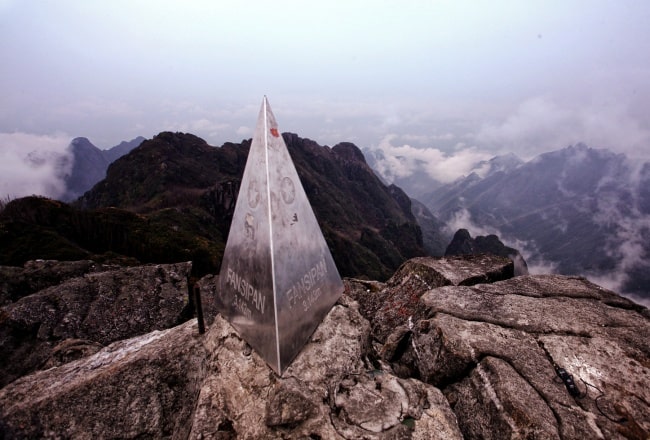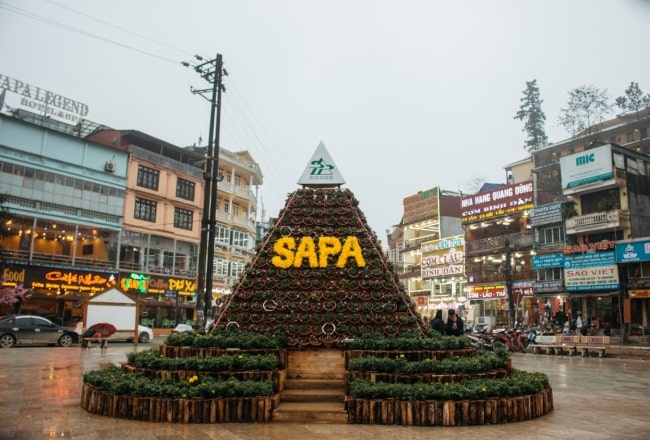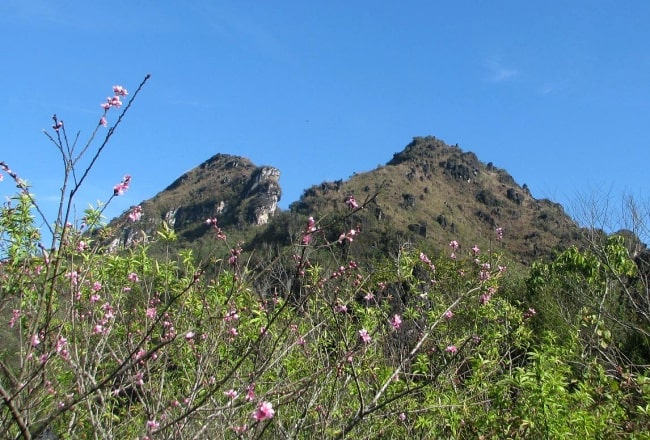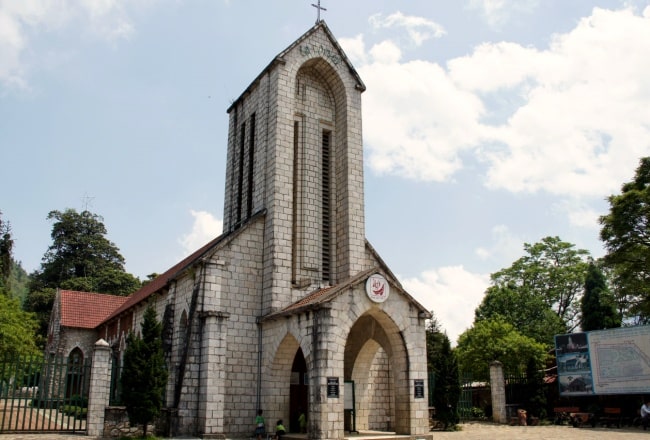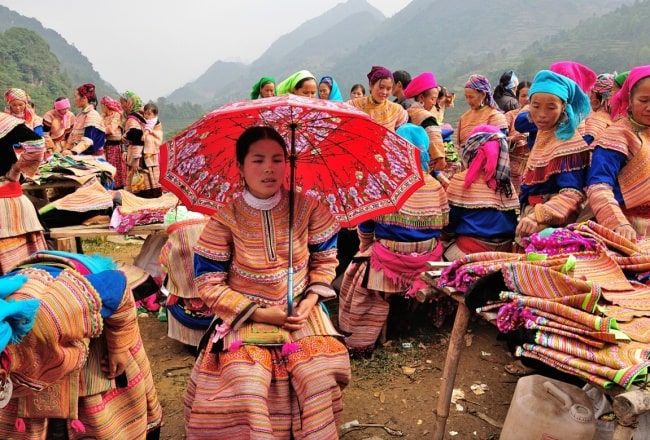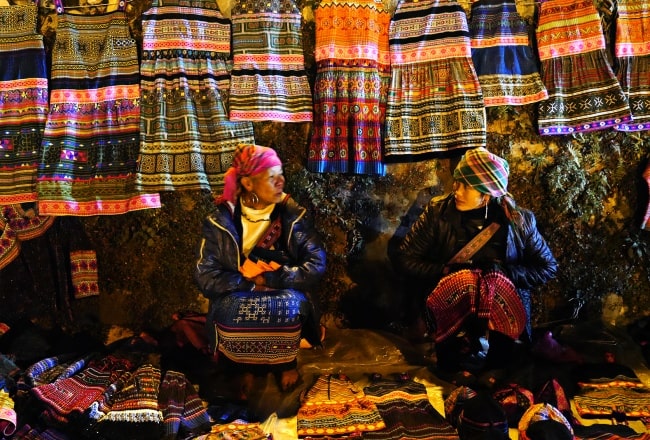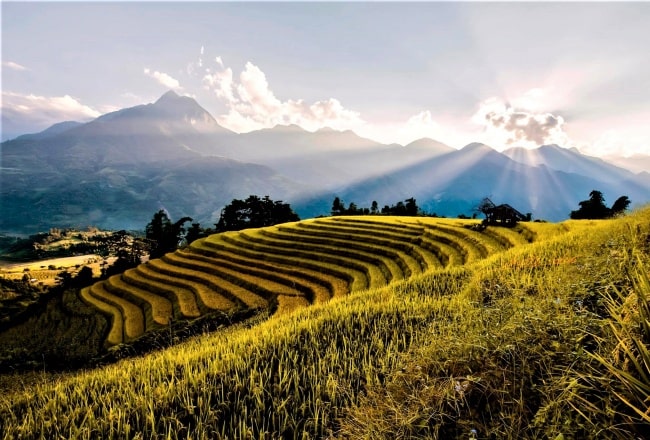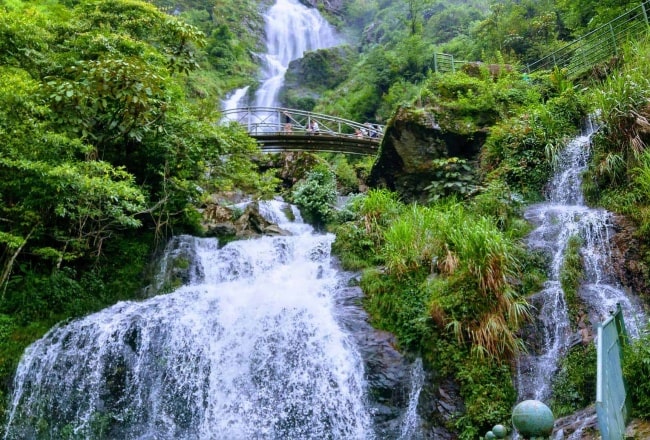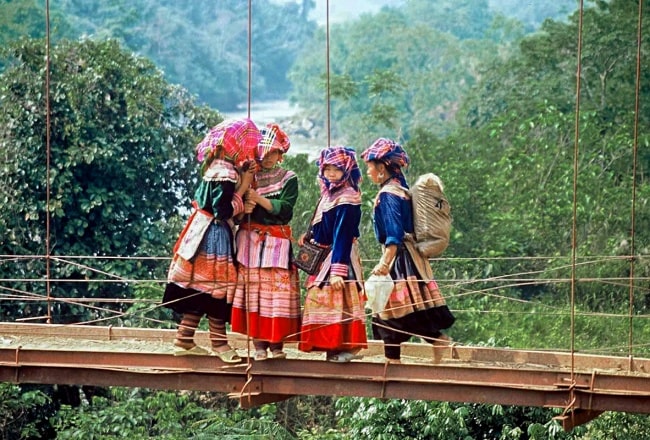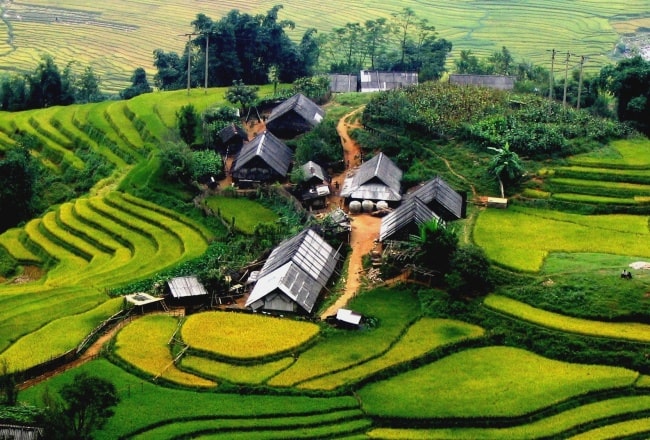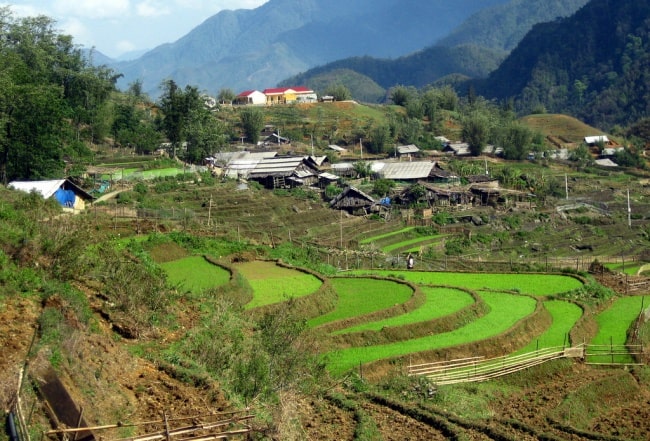Sapa weather overview
Sapa has a temperate climate, so it is cold all year, with the average temperature fluctuates around 15ºC.
The weather in Sapa in summer is not nearly as hot. The daytime temperature usually fluctuates from 20ºC to 25°C, and at night temperature is around 13ºC to 15°C.
In the winter, Sapa is very cold with the temperature drops to 0°C so it will offer an opportunity to watch snow if you travel to Sapa in the winter.
During the year, the rainy season usually starts from May to October, accounting for nearly 80% of the annual rainfall. You will be more likely to encounter showers in these months of the year.
Sapa during the day
A distinctive feature of Sapa weather is that you will get a chance to experience four seasons in one day.
In the morning, you will feel pleasant spring weather. In the afternoon, it’s a bit sunny but still cold and not too hot in the afternoon.
The temperature starts to drop down with clouds, creating a feeling like autumn in the evening or cold weather like winter at night.
Check the below table for the general idea of Sapa weather throughout the year
| Month | Avg. High (°C) | Avg. Mean (°C) | Avg. Low (°C) |
|---|---|---|---|
| Jan | 11.2 | 8.1 | 5.6 |
| Feb | 15.3 | 11.7 | 8.5 |
| Mar | 19.6 | 15.6 | 12.1 |
| Apr | 21 | 17.3 | 14.4 |
| May | 23.4 | 20.1 | 17.3 |
| Jun | 22.9 | 20.2 | 17.8 |
| Jul | 22.3 | 19.6 | 17.5 |
| Aug | 22.6 | 19.4 | 17.2 |
| Sep | 21 | 18.1 | 16.1 |
| Oct | 18.6 | 15.5 | 13.3 |
| Nov | 16.4 | 13.6 | 11.3 |
| Dec | 11.8 | 8.8 | 6.5 |
Best time to go to Sapa
The best time to visit Sapa is from March to May and from September to November. At these times, the weather is relatively stable with sunny days and cool nights. The first period is the fall time. At this time of the year, the weather is very comfortable for tourism. It is dry, clear with much sunshine. The view of Sapa’s rice terraces is at its best between September and October. The cool and dry weather with the stable temperature makes it the perfect time for trekking and photos
In the summer, although the weather is quite warm, it is not as hot as other regions in Vietnam. If you spend time in this town in the period between April and May, you will have the chance to see the wonderful scenes of many colorful flowers and green fields there. Many Vietnamese visit Sapa after the Lunar New Year to admire the blossoming cherry trees.
In the winter, from December to February, the weather in Sapa becomes very cold, especially at night. However, in return, visitors will have the opportunity to watch the sunrise over the valley in the morning. In recent years, there is snow in Sapa. If you have chance to travel to this picturesque town on this occasion, you will definitely see quite a romance scene. However, this is the reason why Sapa is always crowded at this time of the year.
When to Climb Mount Fansipan
If you’ve made your way to Sapa, chances are you want to climb Vietnam’s highest peak, Mount Fansipan. To make the very most of this special experience, careful planning is necessary and that starts with the time of year you choose to go on this adventure.
The best time to climb the mountain is either in springtime (March to May) or autumn (October to November). During these seasons you will have a minimal chance of rain and the temperatures will be most comfortable. If you don’t mind the cold, winter can also work, but you risk getting your view covered by clouds. That way you’d really be missing out as a main part of climbing Fansipan is enjoying the scenery of the surrounding mountains and villages.
A hike during the rainy season is not advisable. For one, because the ascent is very long and getting caught in the rain on a full-day trek is not comfortable. Also, some parts of the trails can become treacherous even if you wear good shoes. Since safety should always come first, it would be best to avoid this hike in summer.
If you are at all flexible with your dates, keep an eye on the weather once you reach Hanoi. Maybe you can add an extra day of sightseeing in the capital to wait out a period of bad weather or visit Sapa before Hanoi if you hear the weather is currently good. This might sound a bit troublesome but when you hike Fansipan, or any trail in Sapa for that matter, on a clear beautiful day and fully experience the wonders of nature in this special area, you’ll be glad you made the effort.
Sapa seasonal weather guide
Spring in Sapa – March to May
From early March to late May Sapa wakes up from its winter sleep. The weather is sunny and dry during the day and crisp and cool at night. At this time, the landscape looks even lusher and greener than the rest of the year as everything is filled with fresh life after winter. This makes for wonderful views as you hike Sapa’s hills and your photos will be priceless.
But not only the perfect temperatures and low chance of rain make this time of year great for traveling to Sapa. The local cherry blossom season is a sight to behold as entire fields and gardens are filled with clouds of pink and white flowers.
If it’s your first time in Sapa, spring is the ideal time to visit. The cool temperatures will make the hikes less strenuous and leave you with more energy to connect with your guide, explore the markets, try local food specialties, and simply enjoy your surroundings.
Early spring is also less busy than other periods, so it will be easier to find a guide and accommodation. Trails will also be quieter, and you’ll be able to enjoy Sapa’s beauty without the crowds. If you feel this time of year is still too cold for hiking, a motorbike tour is another good way to explore the area, either with a guide or by yourself.
Summer in Sapa – June to September
In late May and early June, you will feel the weather getting hotter as the rainy season approaches. During this time daytime temperatures climb to about 25°C and there’s at least one heavy downpour a day. While it often only lasts an hour or two, the rain is so heavy it will quickly turn paths and dirt roads into muddy trails making it harder to travel to and from Sapa as well as get around and hike.
While planning your trip, be aware that some treks might be a lot more difficult or even impossible due to the rain. Follow your guide’s recommendations about when to go out or stay in as they know best how to navigate the area in this season. If the idea of risking a fall in the mud or getting caught in the rain doesn’t bother you too much but might even make your trip more fun, this season could be great for a unique adventure.
Despite the unfavorable weather conditions, Sapa still attracts a lot of domestic visitors during the summer months, making it the busiest time of year in terms of tourism for the hill station. This is another fact you might want to consider when you book your trip as overcrowded trails, markets and hostels could make it more difficult to find a good guide and take away from your experience.
Autumn in Sapa – October to November
Towards the end of September, the daily rains stop and hiking as well as getting around will become easier again. The days will still be warm, but the heat of the rainy season will be over by then. From October to November temperatures will slowly keep falling making for mild days and cool nights.
Autumn is harvest season in Sapa, which is special as the endless rice paddies will weave through the mountains like golden ribbons and give the area a unique look you’ll only get to see right before the rice is gathered.
Coming to Sapa in autumn is a wonderful experience as you’ll be able to enjoy the hiking trails in perfect weather and take in the views of the endless yellow rice paddies. Autumn is also another great time for a motorbike tour as roads will be safe, dry and less busy than in summer.
Winter in Sapa – December to February
From late November all through February, winter takes over in Sapa. Temperatures can drop as low as freezing and you might even get to see snow. While it would be a magical sight to see the rolling hills and mountains covered in a blanket of fresh white snow, you can imagine hiking in this weather could be challenging and would require you to bring a lot of extra gear and clothes you won’t need during the rest of your time in Vietnam. Also keep in mind that nights will be even cooler and staying in simple homestays with limited heating could be very uncomfortable if that’s not something you’re used to.
If it doesn’t get cold enough to snow, you will probably get some light rains which again will make trails and streets muddy. Winter is also a time of heavy fog. If you’re lucky you can catch the clouds gliding in to wrap around the mountains and beautifully reflect the light, but chances are your views of Sapa’s unique landscape will be obstructed by fog and all you’ll see around you as you hike is a grey wall.


